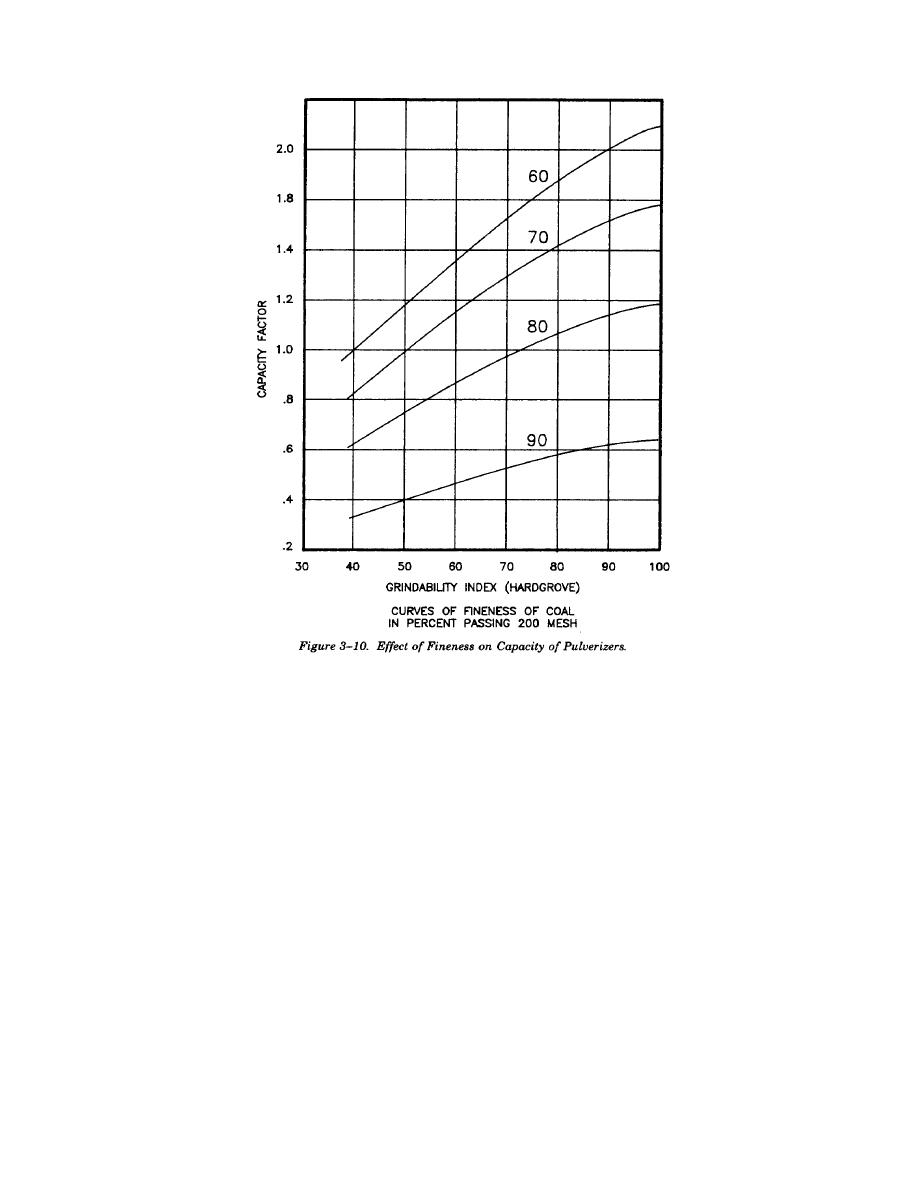
TM 5-810-15
(LNB), OFA, and BOOS other combustion modifi-
potential increases because highly corrosive hydro-
cation techniques include fuel biasing, low excess
gen sulfide forms instead of SO2 due to the
air (LEA), and fuel reburning. Oil fired boilers have
reducing atmosphere. Changes in flame length can
successfully used advanced oil atomizers to reduce
cause impingement and can alter heat absorption
NOx without increasing opacity. Oil/water emulsion
characteristics. Fly ash loading may increase at the
is a technique to reduce NOx on smaller industrial
air heater or particulate collection equipment.
boilers.
(8) Selective catalytic reduction (SCR) uses
(7) NOx reduction side effects should be
ammonia as reagent to reduce NOx to water and
considered in the evaluation of alternatives. Reduc-
elemental nitrogen. SCR offers 90 percent or
tion techniques may require constant operator
greater NOx removal. Reactions take place between
attention or a high degree of automation. LNB*s on
1600 degrees F and 2200 degrees F. Catalyst is
coal fired boilers increase carbon loss in the ash by
needed to promote reactions at lower temperatures.
0.5 to 10% which may require the installation of
Catalyst life is guaranteed up to 5 years and has
classifiers and reinjection lines. Loss on ignition
reportedly been as long as 10 years. Catalyst
(LOI) reduction techniques have other impacts.
replacement is the largest part of O&M costs. The
Classifiers may place constraints on pulverizers
other popular form of post combustion technology
which decrease operation flexibility. Unit efficiency
is selective noncatalytic reduction (SNCR). SNCR
may decrease if excess air has to be increased.
involves the injection of either urea, ammonium
Changes in slagging patterns may occur. Soot
hydroxide, anhydrous ammonia, or aqueous
blowing may be needed more frequently.
ammonia into the furnace within the appropriate
Difficulties may arise during changes in load.
temperature window (1600 degrees F to 2000
Mechanical reliability may decrease. Burner barrel
degrees F) to reduce NOx Some of the NOx is
temperature is difficult to control with some LNB*s
converted to N2O which is considered a "green-
which leads to premature failure. Corrosion
house" gas. Ammonia emissions of "slip" is an-
3-15



 Previous Page
Previous Page
